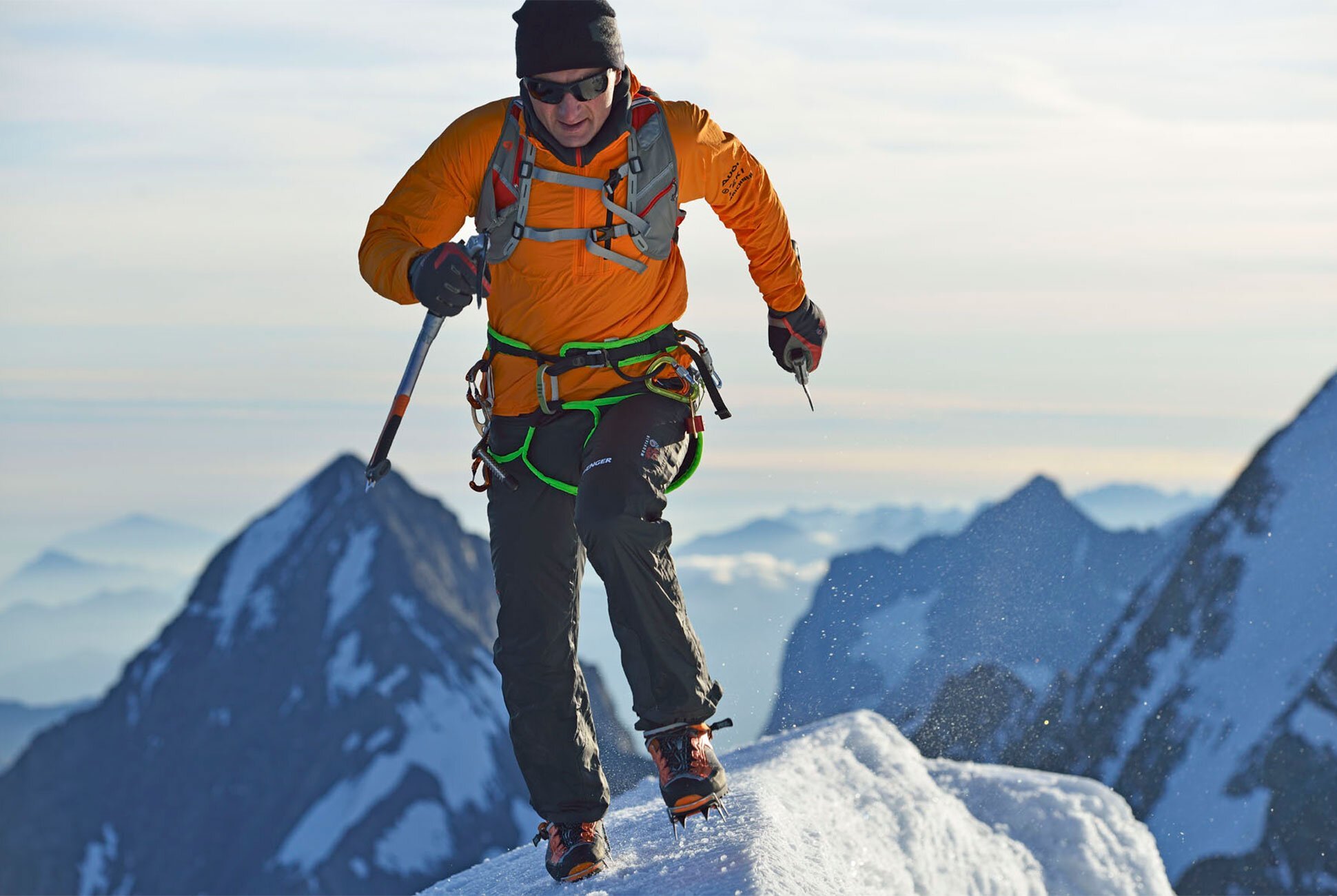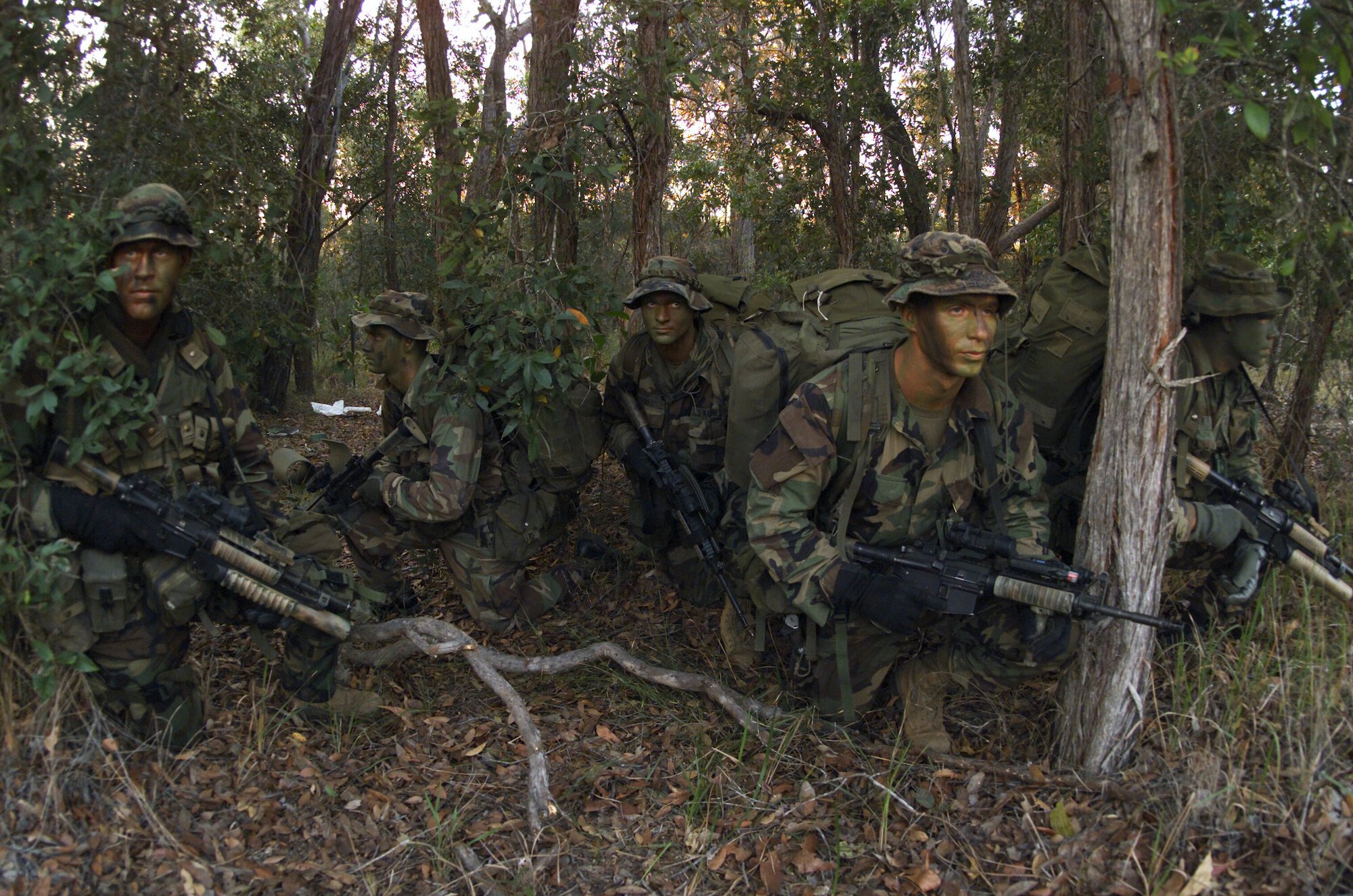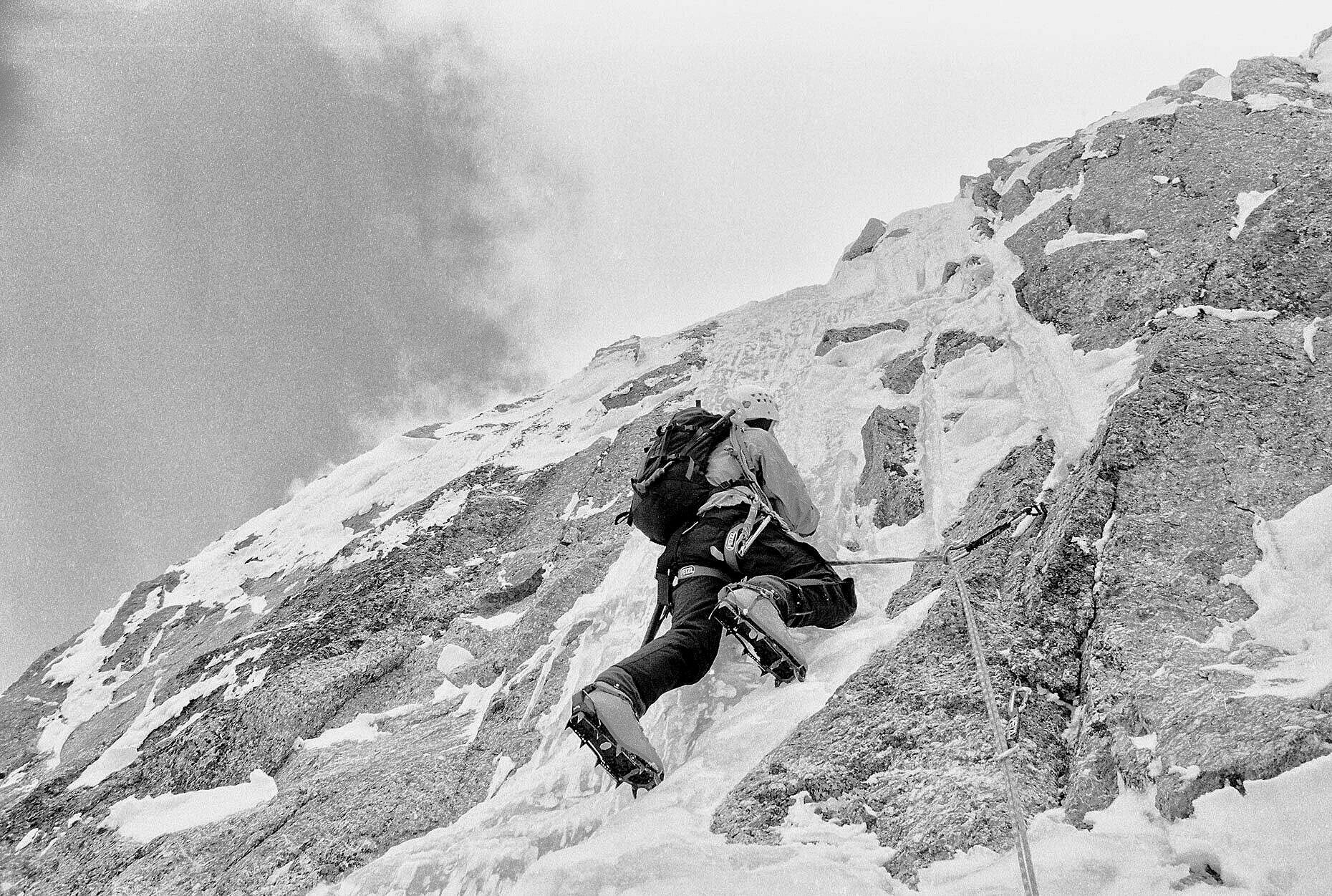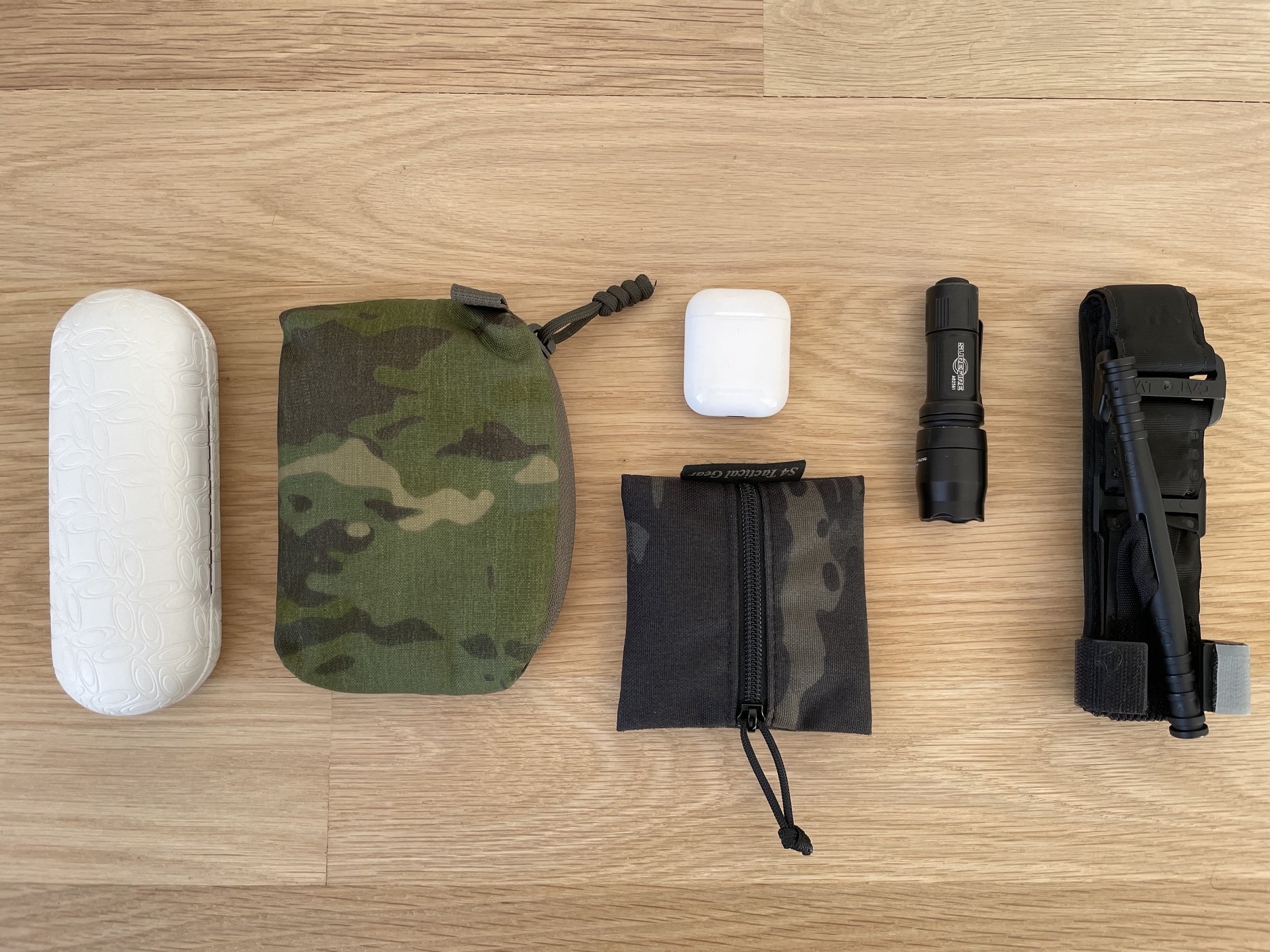The Power Of Being Light
Many years ago I learned to be fast and light. Speed was “safety” both in the mountains and the military, and being light and efficient allowed for that speed. It was a process, taught to me by people, and my own experience and experimentation.
Now I am at the point in my life that I want to feel comfortable and light in everything I do. And having had the experiences in the past provides the direction I need to continue experimenting with this, on things needed every day, like the commute to work, or traveling, and get to the point of enjoying the power of being light and moving with fluidity and purpose.
Where Did This Idea Come From?
My first experience with trying to optimize my load was during basic training. We were being asked to march long distances with heavy weights and I quickly realized that having 70%+ of my body weight on my back was not a fun thing. I didn’t have much say in this, since during basic it just sucks. However, later in the training, when we were actually training for our main purpose, long range reconnaissance, I ran into this senior sergeant that truly took time to explain what we needed to bring with us and, more importantly, what we didn’t. He instilled in us the need to remain capable, meaning, having the tools for the job, while being able to move fluidly, silently, and fast. Fight if needed, escape and evade if necessary.
We often had to carry big loads on our back with everything we would need to sustain us for days or weeks on the field, usually in less than permissive environments, and mostly being on our own.
The first few trips out were hard, but with hardness came experience and each of us learned to tweak and lighten the kit. I learned a lot. From what to bring, to how to select items that can serve multiple purposes, so I could bring even less. I learned to pack better, to be lighter and to truly appreciate the freedom that could give you.
Today, talking to old and new friends still in the military, across many countries, still doing dangerous things, one of the main changes in mindset since my days in recon is how light and portable the gear is becoming. How mission purpose is dictating the gear and how much lighter the operators can be. It was awesome to see.
The Climbing World
A few years later, when I began climbing serious mountains and having to endure the approach to the base of the route we were going to climb, I found myself feeling infuriated with the fact that by the time I got to the base of the mountain I was already tired. It wasn’t so much my physical prowess or lack of it, but rather I was carrying too much, and quickly realized that at least half of what I thought I needed to carry was never being used, or it was there for the “just in case” emergency of having to spend nights on the face of the mountain. Thoughts of my days in recon came back, but the few times I tried to adapt my packing and gear, ended up with bad things happening.
It was then that Mark Twight published Extreme Alpinism and he showed me that light was possible, given a few things that needed to be taken into account. So I adopted it. And again, experience and multiple trips showed me that climbing light was good. It pushed me to be faster, because I needed to be safer. I was carrying less things.
At some point during the late 90s and early 2000s there was a change and the alpine style of single push climbs became something more and more climbers were comfortable with doing. Alpine style means going light, not having porters carrying loads upon loads of equipment for weeks on the mountains. Alpine style means light and fast.
One of the greatest examples of this was Ueli Steck. Ueli was light and incredibly fast. Like Mark Twight, he trained, he pushed the limits of how light you could be in the mountains. I learned from him as well.
 Ueli Steck by Gripped Magazine
Ueli Steck by Gripped Magazine
Climbers like Mark Twight, Ueli Steck, Steve House, Kelly Cordes, and others changed not only the training needed for the mountains, but the clothing systems. Clothing became lighter, breathing and moving with you, making you more comfortable across many temperature ranges and different weather conditions.
This enabled my next foray into being light...
Packing Light and Going Fast
As part of my job, at some point, I needed to travel a lot. Flying became a way of life for a few years, and early on I found out that the lighter you were and the less you packed, the better you’d be in adapting to things going wrong, and the more you’d enjoy the already stressful thing called flying. Packing only the needed items and nothing else allowed me to clear airports faster, enjoy less stress, and be able to move more fluidly around all environments.
I adapted what I learned from climbing (things like layering and having the right kind of clothing) and the military, and I applied it to packing light. The idea was to learn to take only what’s needed for the trip, and remain nimble all around. For this to be successful I learned to check a few things, like weather and environment, for example. I also learned to select the right clothing. That was key.
The thing is, if you have the right things, i.e. clothes that are easy to care for, synthetic and adaptable, you can go much lighter, not only because you can pack less, but the items themselves are lighter as well. Add to that the experience and the know-how on what to bring and how to pack it, and you definitely can go very light.
Packing light saved me several times, when planes were canceled and I had to quickly try to find a replacement, and not having to worry about checked luggage. Also when a few friends were stuck with having to figure lost luggage, or worse, had to delay going to have fun because they had to deal with going to hotels first, check in, figure out what to do with a huge suitcase if they couldn’t check in, etc... Meanwhile, I was free to do what I wanted (however I stayed and helped...).
The Clothing System And Packing Light On The Daily Commute
The final step in my being light was to use this knowledge of packing light and applying it to my commute to work.
I worked many years close to my apartment, where I could walk to the office. But then I had to change that, with a longer commute to large cities, locally and internationally. This caused me to have to adapt and rethink what I carry and how I dress. Again, I don’t like being/feeling heavy. I want to be comfortable, even in changing weather.
Enter techwear or performance wear, a lighter, synthetic system of clothing.
Techwear clothing, is clothing tailored for the urban environment, but made out of technical and synthetic fabrics. These fabrics not only are easy to care for while traveling or during the commute, but provide better protection from the elements, and remain light and comfortable. I always try to find the lightest possible piece I can that is within my budget.
And if you take the lightness of the clothing system, and add to it packing a minimal kit for the commute, you can go very light. See below all I take with me on my daily commute. A small pack, with only the things I need.
So...
So, being light. Being nimble. The more I do it, the more I refuse to do “heavy”, and the more I get annoyed when I’m forced to do it (go heavy that is...).
Give it a try.


